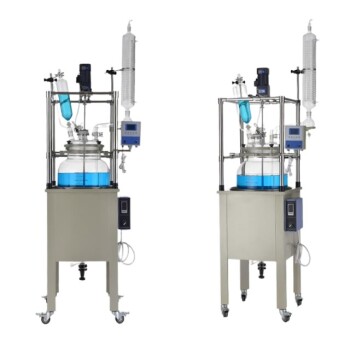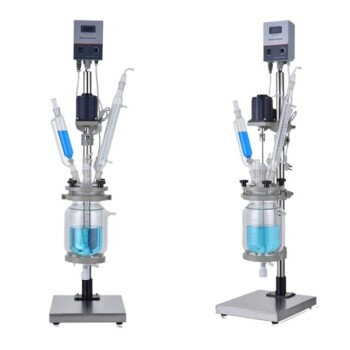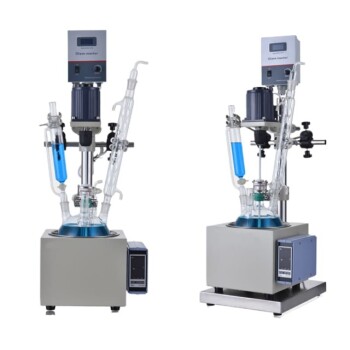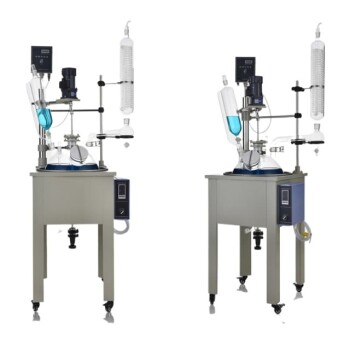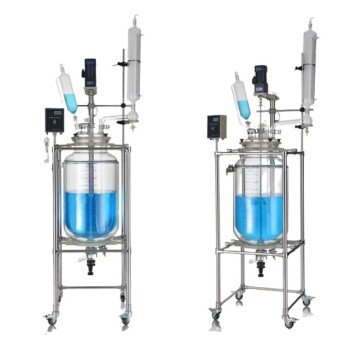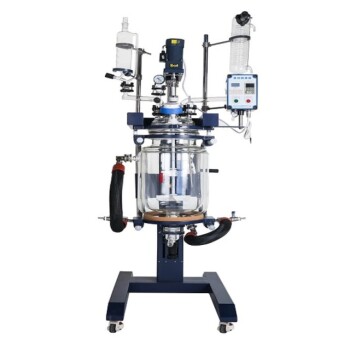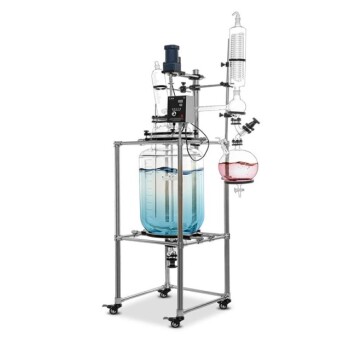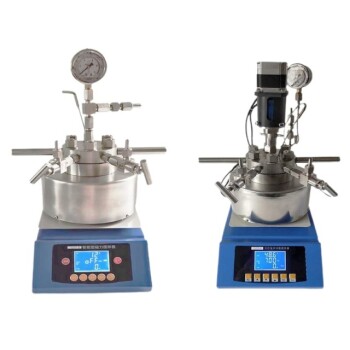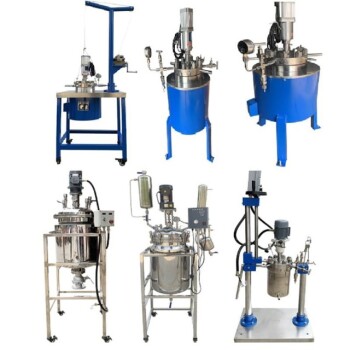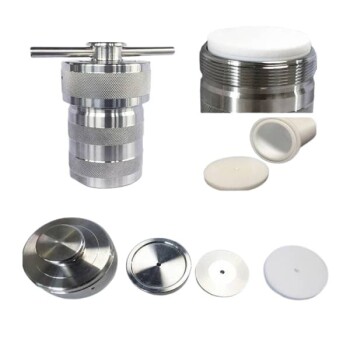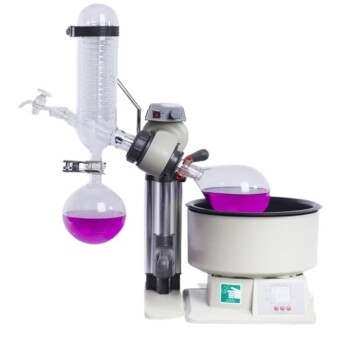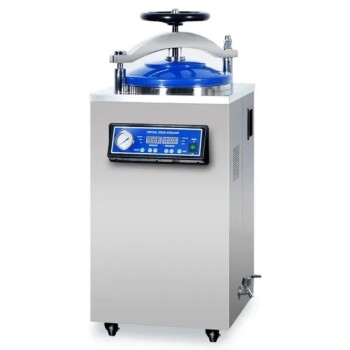The pressure in a glass reactor, particularly a high-pressure glass reactor, is a critical parameter that influences the efficiency, safety, and outcome of chemical reactions. These reactors are designed to operate within a specific pressure range, typically from -1 bar (vacuum) to +12 bar (gauge pressure), and can handle temperatures ranging from -20°C to +200°C. The pressure is controlled to optimize reaction conditions, ensuring faster reactions, clean reaction profiles, and reduced competing reactions. Excessive pressure can damage the reactor or alter the reaction behavior, making precise pressure control essential for successful outcomes.
Key Points Explained:
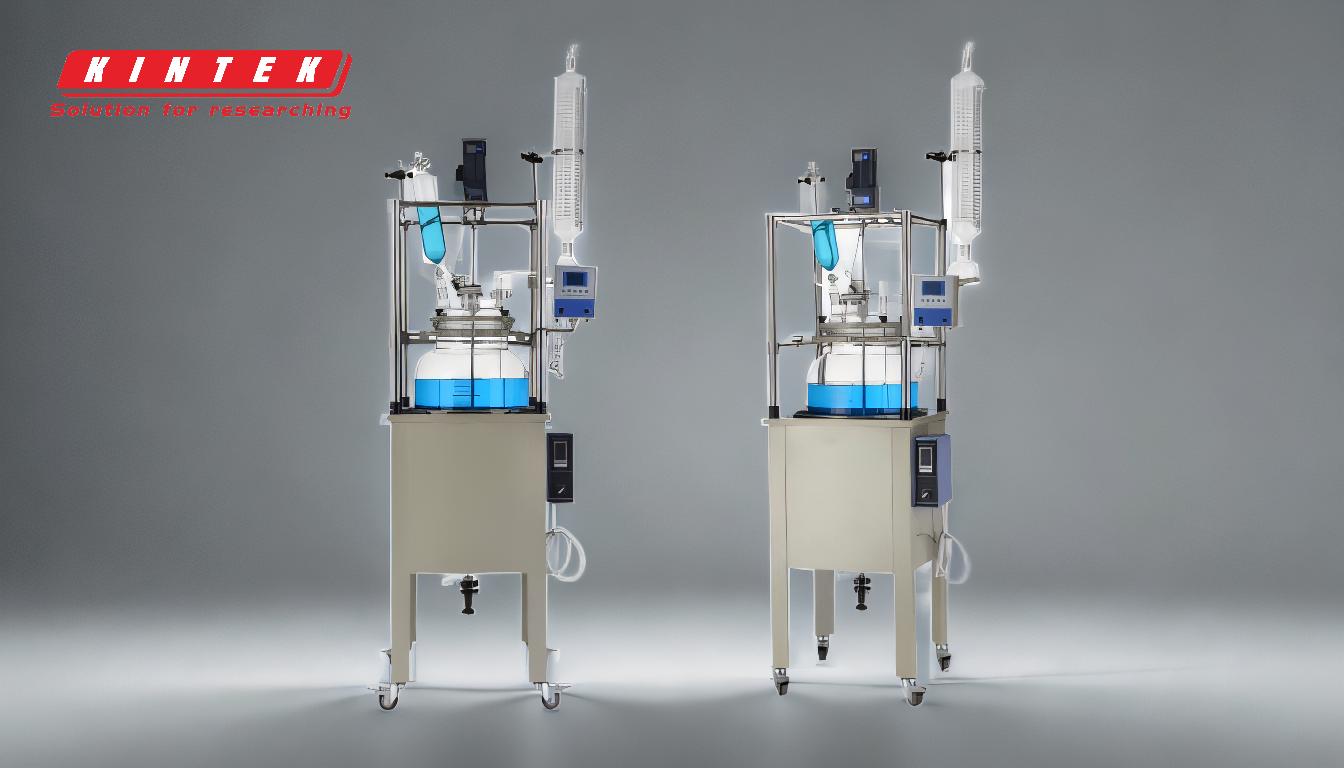
-
Pressure Range in Glass Reactors:
- High-pressure glass reactors operate within a pressure range of -1 bar (vacuum) to +12 bar (gauge pressure). This range allows for versatility in conducting various types of reactions, including those requiring vacuum conditions or elevated pressures.
- Negative pressure (vacuum) is used for reactions that need to remove gases or volatile byproducts, while positive pressure is applied to increase the concentration of reactants and accelerate reaction rates.
-
Impact of Pressure on Chemical Reactions:
- Pressure influences the reaction volume, reactant concentration, and collision frequency of molecules. Higher pressure reduces the reaction volume, increasing the likelihood of molecular collisions, which speeds up the reaction.
- Pressure also affects decomposition reactions, particularly those involving gas release. For example, if a reaction produces gas, increased pressure can suppress gas formation, altering the reaction pathway.
- By maintaining optimal pressure, competing reactions are minimized, leading to cleaner reaction profiles and higher yields.
-
Role of Pressure Control:
- Precise pressure control is essential to ensure the reaction proceeds as expected. Excessive pressure can damage the reactor, compromise safety, or lead to undesirable side reactions.
- Pressure control systems are integrated into the reactor design to maintain consistent conditions, ensuring reproducible and accurate results.
-
Material Considerations for High-Pressure Glass Reactors:
- High-pressure glass reactors are typically made from Borosilicate Glass 3.3, which is highly resistant to corrosion and chemical reactions. This material is suitable for handling a wide range of chemicals, except for fluorine, phosphorus, and hot strong caustic solutions.
- The durability and chemical resistance of Borosilicate Glass 3.3 make it ideal for high-pressure applications, ensuring the reactor's integrity under varying pressure and temperature conditions.
-
Temperature and Pressure Relationship:
- Temperature and pressure are interdependent in high-pressure glass reactors. Proper temperature control is necessary to maintain the desired reaction conditions, especially when operating at elevated pressures.
- The reactor's temperature control system ensures that the reaction temperature remains within a narrow range, preventing fluctuations that could affect the reaction kinetics or safety.
-
Applications of High-Pressure Glass Reactors:
- These reactors are versatile tools used in both industrial and laboratory settings for a wide range of reactions, including polymerization, hydrogenation, and crystallization.
- The ability to operate under varying pressures and temperatures makes them suitable for customized reaction conditions, catering to specific experimental or production needs.
-
Safety Considerations:
- Operating within the specified pressure range is crucial to prevent reactor failure or chemical hazards. High-pressure glass reactors are designed with safety features to handle pressure fluctuations, but users must adhere to operational guidelines.
- Regular maintenance and inspection of pressure control systems are necessary to ensure safe and efficient operation.
By understanding the pressure dynamics in a glass reactor, users can optimize reaction conditions, improve efficiency, and ensure safety. The interplay between pressure, temperature, and material properties is key to achieving successful outcomes in high-pressure glass reactor operations.
Summary Table:
| Key Aspect | Details |
|---|---|
| Pressure Range | -1 bar (vacuum) to +12 bar (gauge pressure) |
| Temperature Range | -20°C to +200°C |
| Impact on Reactions | Faster reactions, cleaner profiles, reduced competing reactions |
| Material | Borosilicate Glass 3.3 (resistant to corrosion, excludes fluorine/phosphorus) |
| Applications | Polymerization, hydrogenation, crystallization |
| Safety | Adhere to pressure limits and perform regular maintenance |
Optimize your chemical reactions with precise pressure control—contact our experts today!
